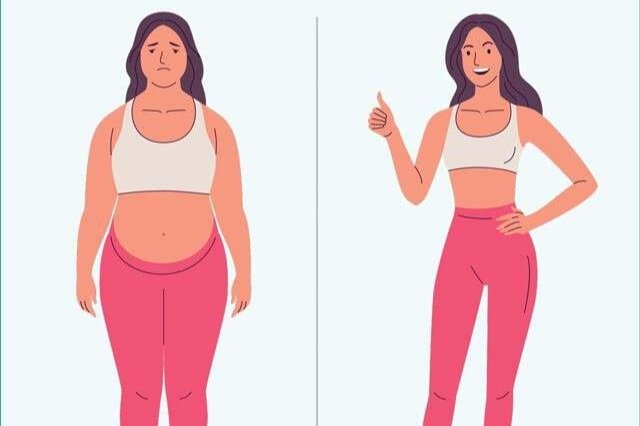Struggling With Belly Fat?
Struggling With Belly Fat?
While I enjoy training a variety of people with various fitness goals, one issue stands out between both my female and male clients: how to reduce and/or get rid of belly fat. And to be clear, these clients are not “fat”; however, they do tend to store their extra weight around their middle. So, what gives? How can you be seemingly fit, but still struggle with belly fat?
Dr. Sara Gottfried, Harvard-trained MD and one of the leading experts on hormones, says, “When you gain weight - particularly at the waist - your body’s biochemistry plummets downward. You create more inflammation and oxidative stress and promote even more fat storage. The result is a vicious cycle of hormonal misfires, symptoms, and disease that will drag you down unless you flip the switch.”
First, let us differentiate between the two types of fat you will find around your belly: subcutaneous and visceral. I know, I know. That’s a mouth full. Let’s break it down a little bit. Subcutaneous is external. It’s the typical type of fat that you can grab with your hands or pinch between your fingers. Visceral fat is internal, and you can find it stored around the inside of some of your organs like your liver, kidneys, intestines, and pancreas.
Research shows the following will help you reduce or rid your body of belly fat:
1. Lay Off the Alcohol: Drinking alcohol is a favorite pastime for humans, both socially and culturally. However, alcohol plays a large role in weight management. Alcoholic drinks are often referred to as “empty calories”. This means they provide your body with calories but contain very little nutrients. Also, when alcohol is consumed, it is burned first as a fuel source before the body uses anything else. This includes glucose from carbohydrates or lipids from fats and excess glucose and lipids ends up as adipose tissue or fat.
2. Cortisol Levels: In 2009, I experienced an extremely stressful event in my life. I developed a “life preserver” around my waist. I soon discovered my cortisol levels were way out of whack. I immediately looked for a miracle pill and discovered there was no such thing. An increase in stress means an increase in your cortisol levels. If you’re stressed, your cortisol levels will break down muscle and store fat. What works best is a daily practice of 30 minutes to reset stress levels in the body. Try listening to a guided meditation, a hike in nature, getting a massage, or walking your dog around the block. Figure out what works for you and do it as often as you can!
3. Get Your Beauty Sleep: Your body needs 7 to 8.5 hours of uninterrupted sleep to burn visceral fat. Sleep keeps cortisol levels and insulin levels in check. It couldn’t be easier to burn fat! Get yourself tucked under those covers.
4. Remove Gluten and Dairy: You probably already know someone who follows a gluten-free or dairy-free diet. Well, it’s not just a fad. And they’re not doing it just to be more hipster and trendy. Research suggests that going gluten/dairy-free can reduce inflammation and insulin resistance. Food intolerances tend to raise stress hormones, such as cortisol, trigger inflammation, and over-activate the immune system.
6. Interval Training: Many of my clients are long distance runners. They are of the mindset that frequent long-distance running was the best way to burn fat. Running actually raises cortisol levels to almost three times the normal amount. Burst training or interval training is highly recommended by many athletic trainers as the most effective way to lose weight and burn fat. There are a variety of ways to perform interval training. For someone who is just starting out, try a jog/walk (push) at a brisk pace for 30 seconds and then jog/walk at a slower pace (reset) for 2 minutes. Continue until you get tired or after ten “push/reset” intervals.
7. Protein: Higher protein intakes tend to provide more satiety and less hunger. Be aware of how much protein you are consuming, currently. Most evidence suggest that 0.73 grams of protein per pound is a recommended daily target. Protein is more than just meat, fish and eggs. High protein foods also include a variety of beans, vegetables like broccoli, brussel sprouts and asparagus, chickpeas, quinoa, nuts and seeds, just to name a few. Try eating more: Dark, leafy greens, organic chicken, grass fed beef, cold-water wild caught seafood and wild meats like venison and buffalo.
8. Limit Fructose: Fructose is a type of sugar that makes up around 50% of table sugar and high-fructose corn syrup. Scientists are concerned that excessive intake may cause metabolic disorders such as obesity, type II diabetes, heart disease and even cancer. While some sweet fruits and vegetables contain fructose, they provide relatively low amounts.
I know there is a lot of information here and many folks are reluctant to change. What I have always suggested is to start small. Start with adding 30-minute walks at least 6 days/week. Reduce alcohol consumption and increase protein intake. Instead of drinking orange juice, eat an orange. Small changes can be habitual and good habits equal healthier results.
Kim Duke is a certified personal trainer and owner of Core Performance Fitness and Training, located at 55 Bristol Lane, Ellicottville, NY. Kim resides in Ellicottville where she raised her two sons, Zach and Nik. For more information about her studio visit her Facebook page or www.coreperformancefitness.com. Kim can be reached directly at 716-698-1198.

